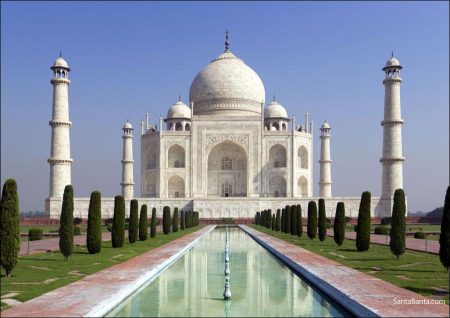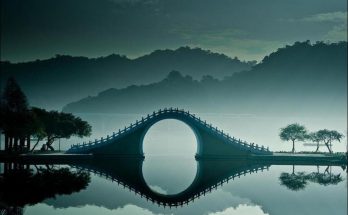Located on the banks of the sprawling river Yamuna, Delhi, the capital of India, is a fascinating blend of a myriad of ancient and modern civilizations, reflected not only in its diverse cultural heritage and historical monuments, but also in the current social structure and lifestyles. The city tells the history of different civilizations and dynasties that flourished here for over 3000 years. Their legacy survives in the many ancient monuments left by their leaders, each a chronicle of the glory of his era and a reflection of the dominant culture. The remains of seven distinctive capital cities can be seen here.
Here is a selection of the top five tourist attractions in Delhi:
Qutub Minar
A minaret of mammoth (238 feet) built from the remains of 27 Hindu and Jain temples during the 1193-1369 year, commemorating the victory of Qutab-ud-din over last Hindu kingdom in the city, the Qutub Minar is one of the oldest monuments of Delhi. Decorated with calligraphy representing verses from the Koran, it narrows from a diameter of 50 feet at the base just 8 feet high. The first three floors are constructed of red sandstone and white marble two superiors.
In the same complex there is a mysterious Iron Pillar, bearing fourth-century Sanskrit inscriptions of the time of King Chandragupta II, who has intrigued scientists at the highest point because it has withstood centuries of climatic changes and remained rust-free until now. A popular legend says that if you can surround it with your arms while standing with his back to touch any wish will be fulfilled.
Red Fort
Popularly known as Lal Quila and built by Shah Jahan during the years1618-1647, Red Fort, with its massive sandstone walls and exquisite architecture, is the ultimate reminder of the richness, beauty and sheer power of the Mughal empire. There are many must-see places in the fort, resplendent decorative complex, with separate bedrooms and a balcony for women, swimming pools, and natural air conditioning. It also houses an archaeological museum.
Jantar Mantar
Built in 1724 by Maharaja Sawai Jai Singh II, the esoteric, impressive structure of salmon-colored stone and brick is an observatory used by the king to measure time and calculate the positions of stars and planets, and the prediction of eclipses. It houses several buildings with a unique combination of architecture geometric shapes, each for a specialized use of astronomical measurement.
Purana Qila (Old Fort)
Was built on the ruins of the old home town of Delhi (Indraprastha, founded in the 3rd or 4th century BC), the Afghan ruler Sher Shah during the years 1538-1545, the old fort with its walls massive and three imposing gateways gives a fair idea of its lost glory. It houses a small octagonal red sandstone tower, used by King Humayun as a library, mosque Qila-i-Kuhran, and a small archaeological museum.
India Gate
Built in sandstone, India Gate is a memorial to commemorate the sacrifice of Indian soldiers during the First World War The grandeur of the architecture of the house near the Rashtrapati Bhawan and Parliament not to be missed, whatsoever.
So start planning your trip!
Visits: 91



